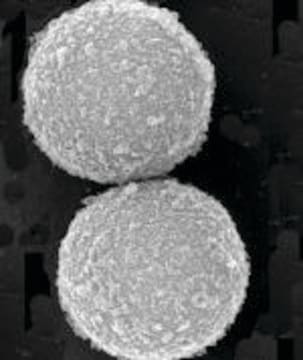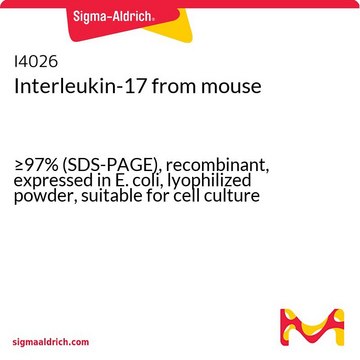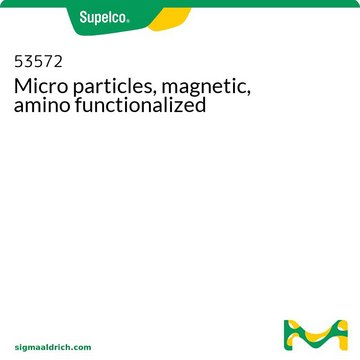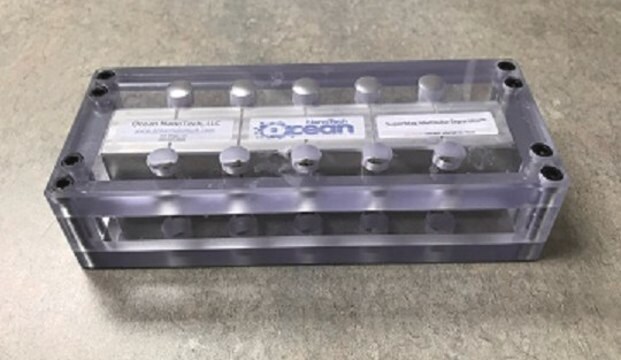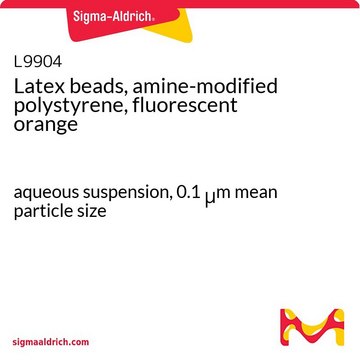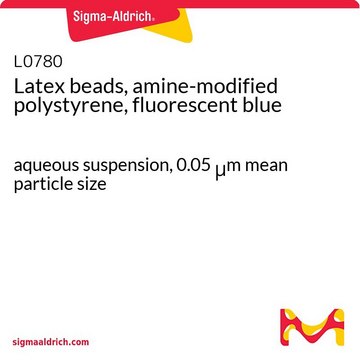I7643
Amine-terminated magnetic particles
50 mg/mL in deionized water
Faça loginpara ver os preços organizacionais e de contrato
About This Item
Produtos recomendados
fonte biológica
synthetic (organic)
Formulário
suspension
concentração
50 mg/mL in deionized water
Extensão da rotulagem
~12 μmol per mL
técnica(s)
affinity chromatography: suitable
Matriz
Superparamagnetic iron oxide particles, approx. 1 μm in size
capacidade
~10 mg/mL, protein coupling capacity (protein)
adequação
suitable for microbiology
temperatura de armazenamento
2-8°C
Aplicação
Amine-terminated magnetic particles are buffered in an aqueous solution and used for affinity chromatography, protein chromatography and activated/functionalized matrices. Amine-terminated magnetic particles have been used in the development of methods to detect Mycobacterium tuberculosis and Herpes Simplex Virus-1.
Código de classe de armazenamento
11 - Combustible Solids
Classe de risco de água (WGK)
WGK 3
Ponto de fulgor (°F)
Not applicable
Ponto de fulgor (°C)
Not applicable
Escolha uma das versões mais recentes:
Já possui este produto?
Encontre a documentação dos produtos que você adquiriu recentemente na biblioteca de documentos.
Os clientes também visualizaram
David A C Thomson et al.
The Analyst, 136(8), 1599-1607 (2011-03-04)
Amplification-free detection of nucleic acids in complex biological samples is an important technology for clinical diagnostics, especially in the case where the detection is quantitative and highly sensitive. Here we present the detection of a synthetic DNA sequence from Herpes
Feng Wang et al.
Bioresource technology, 101(23), 8931-8935 (2010-07-27)
Newly large-pore magnetic mesoporous silica nanoparticles (MMSNPs) with wormhole framework structures were synthesized for the first time by using tetraethyl orthosilicate as the silica source and amine-terminated Jeffamine surfactants as template. Iminodiacerate was attached on these MMSNPs through a silane-coupling
Edith Torres-Chavolla et al.
Biosensors & bioelectronics, 26(11), 4614-4618 (2011-05-28)
The present study describes the development of a DNA based biosensor to detect Mycobacterium tuberculosis using thermophilic helicase-dependent isothermal amplification (tHDA) and dextrin coated gold nanoparticles (AuNPs) as electrochemical reporter. The biosensor is composed of gold nanoparticles (AuNPs) and amine-terminated
Nossa equipe de cientistas tem experiência em todas as áreas de pesquisa, incluindo Life Sciences, ciência de materiais, síntese química, cromatografia, química analítica e muitas outras.
Entre em contato com a assistência técnica
